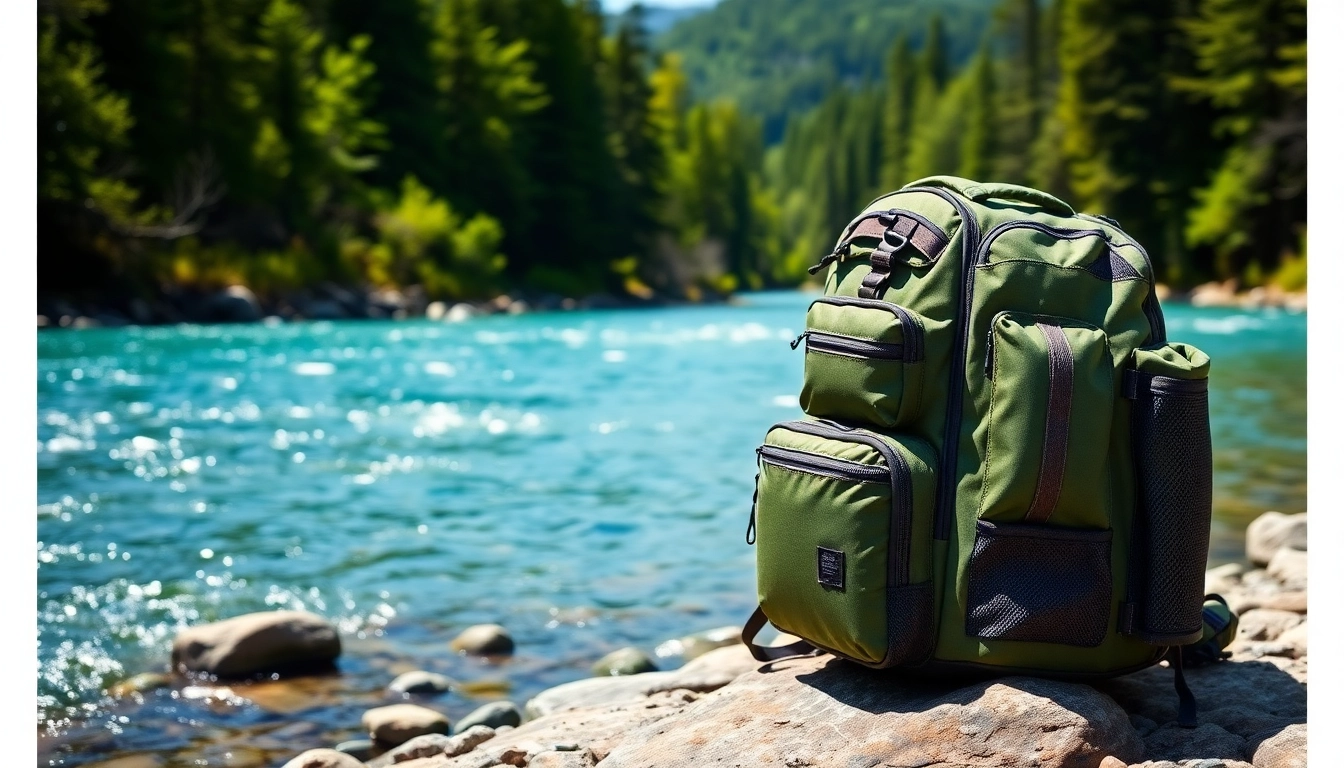The Importance of a Quality Fly Fishing Backpack
When it comes to enjoying a day on the water, the last thing you want to worry about is your gear. Investing in a high-quality Fly fishing backpack is essential for keeping your tackle, snacks, and personal items organized and easily accessible. A good backpack not only enhances your fishing experience but also allows you to focus on what truly matters: the thrill of the catch. In this comprehensive guide, we will explore the critical aspects of selecting the right fly fishing backpack to meet your needs.
Understanding Your Needs in Fly Fishing
Every angler has different preferences and needs based on location, duration of trips, and personal fishing style. Start by considering where you fish most often: are you out on the river for a few hours, or do you prefer multi-day excursions into the backcountry? Your fishing environment will dictate what features you should prioritize in a backpack.
For short, casual outings, a lightweight daypack might be sufficient, while longer expeditions may require a more robust pack with additional storage for overnight gear, including sleeping bags and cooking essentials. Furthermore, the type of water you are fishing—whether it’s freshwater streams or saltwater flats—will also influence the design and functionality you’ll need in your pack.
Key Features of a Fly Fishing Backpack
When shopping for a fly fishing backpack, several features can make a significant difference in your experience. Firstly, look for a pack with enough compartments and organizational features to keep your gear tidy. This might include specialized pockets for fishing tackle, compartments for clothing, or even hydration sleeves for water bottles.
Another critical feature is comfort; adjustable and padded shoulder straps, a proper hip belt, and a breathable back panel ensure that the pack stays secure, even when you’re moving swiftly across uneven terrain. Weight distribution is essential for minimizing fatigue, especially during longer treks.
Benefits of a Suitable Backpack Design
The right fly fishing backpack will bring many benefits, from enhancing your fishing technique to offering additional comfort and support during your outdoor adventures. A well-designed pack will reduce strain on your back and shoulders by promoting proper weight distribution and allowing for freedom of movement. Moreover, ample storage space for essential gear minimizes the chances of forgetting critical items that can make or break your fishing trip.
Types of Fly Fishing Backpacks Available
Daypacks vs. Multi-day Fly Fishing Backpacks
Understanding the different types of fly fishing backpacks is crucial in making an informed decision. Daypacks are typically smaller and designed to carry just the essentials—perfect for a quick afternoon on the stream. Features usually include a few storage pockets and space for a water bottle or lunch.
In contrast, multi-day backpacks are significantly larger, with extra compartment space and organizational options. These packs are made for extended excursions, often featuring multiple ways to access gear and extra storage for camping supplies.
Specialized Features in Fly Fishing Backpacks
Depending on your needs, there are numerous specialized features to consider when choosing a fly fishing backpack. For instance, some packs come with built-in rod holders, allowing you to secure your fishing rods without needing to dismantle them when you’re on the move.
Additionally, some backpacks feature waterproof compartments or coatings, protecting your gear from the elements. These features are especially critical for anglers who fish in unpredictable weather or near water sources.
How to Choose the Right Type
Choosing the right type of fly fishing backpack can be overwhelming, given the variety of options available. Start by listing down your needs. Determine how much gear you usually carry and the duration of your fishing trips. If you’re looking for versatility, consider a pack that allows quick access and offers modular compartments for easy organization.
Additionally, it may be beneficial to try on various models to assess fit and comfort. Spending some time in-store or renting packs before purchasing can better inform your decision.
What to Look for in a Fly Fishing Backpack
Durability and Material Considerations
Durability is a non-negotiable factor when choosing any outdoor gear, and your fly fishing backpack is no exception. Opt for materials that can withstand wear and tear, such as high-denier nylon or polyester, which can endure rough handling and resist water penetration.
The seams and zippers also play a crucial role in the lifespan of your backpack. Look for reinforced stitching and quality zippers that operate smoothly and withstand significant stress.
Comfort Features and Ergonomics
As mentioned earlier, comfort should be a priority in your decision-making process. Proper ergonomics in design can drastically impact your fishing trips. Look for features like an adjustable harness and padded straps that offer support while reducing strain.
Ventilation is also essential; a breathable panel along the back of the pack can help keep you cool, especially during warm weather or strenuous hikes.
Waterproofing and Protection
Weather can be unpredictable; thus, investing in a waterproof fly fishing backpack is a decision you won’t regret. Look for packs with waterproof materials or treatments, allowing you to fish without worrying about the elements ruining your gear.
Sealed zippers and roll-top closures are features that add an extra layer of protection against splashes and rain. Ensuring that your gear remains dry can significantly enhance the quality of your fishing experience.
How to Organize Your Fly Fishing Backpack
Strategic Packing Tips for Fly Fishing
Organization is the key to an enjoyable fishing trip, and strategic packing can make all the difference. Start by determining which items you use most frequently and place them in easily accessible pockets. For instance, backup flies, tippets, and essential tools should be at the top or in designated compartments.
Utilizing packing cubes or compression sacks can help maximize space and keep smaller items organized. This organization method also allows for quick adjustments during your fishing day without rummaging through the entire pack.
Essential Gear to Keep Handy
Your fly fishing backpack should include essential gear like your fishing license, tools, and personal items. Some recommended items to keep handy in your pack include:
- First-aid kit
- Multi-tool or knife
- Insect repellent
- Sunscreen
- Snacks and hydration supplies
Additionally, consider designated pockets for items such as phone or camera for documenting your catches, ensuring that they remain protected yet accessible throughout your day.
Common Mistakes to Avoid When Packing
Packing a fly fishing backpack can be tricky. One common mistake is overpacking—monitor your gear levels to avoid a heavy load that can slow you down. Another mistake is failing to secure small items, leaving them vulnerable to loss or damage. Regular checks of your pack can help keep you organized and ready for the next trip.
Maintaining Your Fly Fishing Backpack
Cleaning and Care Techniques
Taking care of your backpack can extend its life considerably. After each fishing trip, empty the pack and inspect it for any debris or moisture. Clean the exterior using a damp cloth and mild soap; avoid harsh chemicals that can damage materials.
When it comes to the interior, ensure you remove any dirt or salt that may have accumulated. Regular cleaning helps prevent odors and dirty gear from mixing.
Assessing Wear and Tear
Regularly assessing your backpack for wear and tear can help prevent mid-trip failures. Check for signs of fraying seams, broken zippers, or fabric degradation. Address minor repairs promptly or consider replacing the pack if it becomes severely damaged.
When to Replace Your Backpack
Knowing the right time to replace your fly fishing backpack can save you headaches on the water. If you find that your backpack no longer meets your needs, whether through lack of features or significant damage, it’s time to consider a new pack. An appropriate time may also be after several hard seasons of fishing wherein the wear may compromise the effectiveness of the pack.


